Monthly Updates on Recent Books in the History of Christianity
To raise awareness of recent books in the history of Christianity, the editorial staff of Church History: Studies in Christianity and Culture highlights each month a list of 10-15 books in diverse periods and geographical regions that we hope will be of interest to our members. We include here below the 44th monthly list, chosen by our staff, with excerpts from the publishers’ blurbs.
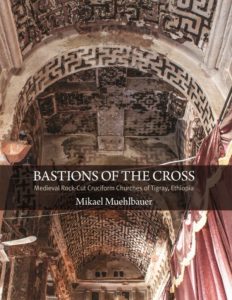
Mikael Muehlbauer, Bastions of the Cross: Medieval Rock-Cut Cruciform Churches of Tigray, Ethiopia. 2023
This landmark publication in the Dumbarton Oaks Studies series is the first monograph dedicated to the great cruciform churches of late-eleventh-century Tigray, Ethiopia: Abreha wa-Atsbeha, Wuqro Cherqos, and Mika’el Amba. In addition to the author’s acute architectural and historical analysis, the volume is richly illustrated with new photography of these isolated monuments, making it an invaluable resource for generations to come.
These churches, hewn directly into sandstone, are often passed over in modern scholarship on the architecture of the medieval period. Within Ethiopia, they were unparalleled in scale and in many respects anticipated the more famous thirteenth-century churches at Lalibela. But rather than treating these monuments in isolation, Bastions of the Cross situates them within the broader architectural transformations occurring at the time in Byzantium, the Islamicate, and South Asia. The result is a volume that truly contributes to a global history of the Middle Ages.
Crossing traditional disciplinary and geographical boundaries with ease, Bastions of the Cross will be of interest to scholars interested in any facet of medieval art, architecture, and history.

Christina Petterson, Early Capitalism in Colonial Missions: Moravian Household Economies in the Global Eighteenth Century. 2024
Drawing on unpublished archival material, this volume compares Moravian economic practice in three different mission-settings, to demonstrate how Moravian practices evolved during the 18th century as part of a globalizing world and economy. Delivering in-depth analysis of the far-reaching and deep seated effects of missionary activity on indigenous communities and social relations, it explores how different economic contexts had an impact on the missionaries' relations with Indigenous and slave-populations in empire.
Petterson provides an insight how the missionaries worked, lived among various non-European peoples, and how they organised themselves and their surroundings at a time of changing identities and socio economic change. Analysing how missionary practice developed over this period, it also demonstrates how the Moravian leadership's priorities and how this affected attitudes to non-European peoples on the ground. Standing outside of national and imperial boundaries, and ambivalent about the political notion of imperialism as well as colonisation itself, Moravian missionaries nonetheless functioned in parallel with colonial structures, and were part of a broadly culturally colonial mission. So, even on the outskirts of imperial organisation, they were often a crucial part of colonial practice and took part in normalising capitalist relations in many-but not all-settings, as this book demonstrates.

Joseph E. Sanzo, Ritual Boundaries: Magic and Differentiation in Late Antiquity. 2024
University of California Press
In Ritual Boundaries, Joseph E. Sanzo transforms our understanding of how early Christians experienced religion in lived practice through the study of magical objects, such as amulets and grimoires. Against the prevailing view of late antiquity as a time when only so-called elites were interested in religious and ritual differentiation, the evidence presented here reveals that the desire to distinguish between religious and ritual insiders and outsiders cut across diverse social strata. The magical evidence also offers unique insight into early biblical reception, exposing a textual world in which scriptural reading was multisensory and multitraditional. As they addressed sickness, demonic struggle, and interpersonal conflicts, Mediterranean people thus acted in ways that challenge our conceptual boundaries between Christians and non-Christians; elites and non-elites; and words, materials, and images. Sanzo helps us rethink how early Christians imagined similarity and difference among texts, traditions, groups, and rituals as they went about their daily lives.
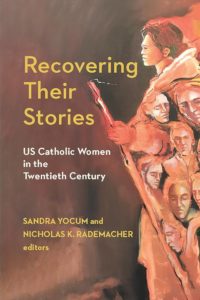
Sandra Yocum and Nicholas K. Rademacher, eds. Recovering Their Stories: US Catholic Women in the Twentieth Century. 2024
Recovering Their Stories focuses on the many contributions made by Catholic lay women in the 20th century in their faith communities across different regions of the United States. Each essay explores the lives and contributions of Catholic lay women across diverse racial, ethnic, and socio-economic backgrounds, addressing themes related to these women’s creative agency in their spirituality and devotional practices, their commitment to racial and economic justice, and their leadership and authority in sacred and public spaces
Taken together, this volume brings together scholars working in what otherwise may be discreet areas of academic study to look for patterns, areas of convergence and areas of divergence, in order to present in one place the depth and breadth of Catholic lay women’s experience and contributions to church, culture, and society in the United States. Telling these stories together provides a valuable resource for scholars in a number of disciplines, including American Catholic Studies, American Studies, Women and Gender Studies, Feminist Studies, and US History. Additionally, scholars in the areas of Latinx studies, Black Studies, Liturgical Studies, and application of Catholic social teaching will find the book to be a valuable resource with respect to articles on specific topics.

Fiona Fritz, The Multifunctionality of a Medieval Hagiography: A Historical Case Study of the ‘Gesta et Passio’ and the Making of the Danish Royal Saint Cnut (c. 1100). 2024
The 'Gesta et Passio' is a Latin hagiographic text written around 1112 by Ælnoth of Canterbury about the Danish king Cnut who was killed in 1086 and later venerated as St Cnut.
Due to its textual complexity Ælnoth's work has been considered heterogeneous and strangely structured. With her study Fiona Fritz aims to show that this complexity reflects the systematic multifunctionality of the text and that the text's construction afforded Ælnoth the opportunity to express his perception of contemporaneous ecclesiastical and secular political matters. Relevant textual functions include the construction of Cnut as a royal saint, propagating the cult of St Cnut, furthering ecclesiastical interests, presenting an ideology of kingship, and enhancing the legitimacy of the ruling dynasty.
The analysis of the text considers both the historical context of its production and various textual moves and strategies employed by the author. Over and above the results attained in relation to the 'Gesta et Passio' as an individual text, the present study can be taken as a general exploration of methods for the analysis of the potential of hagiographical texts for various functions and for multifunctionality.

Ryan Carr, Samson Occom: Radical Hospitality in the Native Northeast. 2023
The Mohegan-Brothertown minister Samson Occom (1723–1792) was a prominent political and religious leader of the Indigenous peoples of present-day New York and New England, among whom he is still revered today. An international celebrity in his day, Occom rose to fame as the first Native person to be ordained a minister in the New England colonies. In the 1770s, he helped found the nation of Brothertown, where Coastal Algonquian families seeking respite from colonialism built a new life on land given to them by the Oneida Nation. Occom was a highly productive author, probably the most prolific Native American writer prior to the late nineteenth century. Most of Occom’s writings, however, have been overlooked, partly because many of them are about Christian themes that seem unrelated to Native life.
In this groundbreaking book, Ryan Carr argues that Occom’s writings were deeply rooted in Indigenous traditions of hospitality, diplomacy, and openness to strangers. From Occom’s point of view, evangelical Christianity was not a foreign culture; it was a new opportunity to practice his people’s ancestral customs. Carr demonstrates Occom’s originality as a religious thinker, showing how his commitment to Native sovereignty shaped his reading of the Bible. By emphasizing the Native sources of Occom’s evangelicalism, this book offers new ways to understand the relations of Northeast Native traditions to Christianity, colonialism, and Indigenous self-determination.
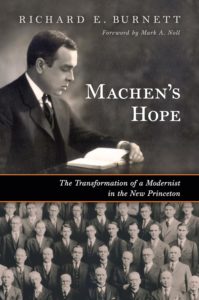
Richard E. Burnett, Machen’s Hope: The Transformation of a Modernist in the New Princeton. 2024
Gresham Machen is known as a conservative hero of the fundamentalist-modernist controversy. But was he always so staunchly antimodernist?
In this sweeping new biography, Richard E. Burnett examines the whole of Machen’s life and career—from his early years at Princeton, to his experience in the First World War, to his founding of Westminster Theological Seminary . Burnett pays special attention to topics that have received little attention from biographers, like Machen’s crisis of faith and his support for historical criticism of Scripture.
Incorporating all of Machen’s major works as well as his previously unpublished private correspondence, Burnett crafts a nuanced narrative of Machen’s intellectual journey from enthusiastic modernist to stalwart conservative. Nuanced and thorough, Machen’s Hopewill challenge scholars’ assumptions about Machen and his dynamic era.
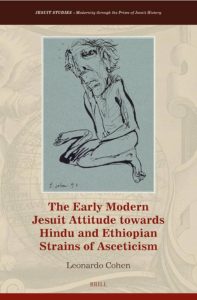
Leonardo Cohen, The Early Modern Jesuit Attitude towards Hindu and Ethiopian Strains of Asceticism. 2024
This book presents an early modern Jesuit attitude towards Hindu and Ethiopian strains of asceticism. The Jesuits’ descriptions of both the yogis and the Ethiopian renunciates were marked by ambivalence. While critical of these ascetics, the missionaries also pointed out admirable facets of their comportment. In both the Society of Jesus’ positive and negative impressions, there are glaring ethnocentric views that shift the spotlight onto the other’s flaws. Like many historical cases, these perceptions evolved into a sort of inverted mirror image of the self that revealed differences between the European Catholic and the native renunciate.
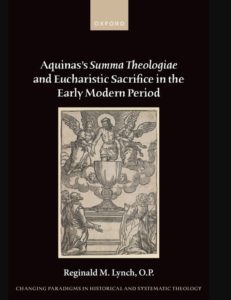
Reginald Lynch, O.P. Aquinas's Summa Theologiae and Eucharistic Sacrifice in the Early Modern Period. 2024
This book is focused on the reception history of Thomas Aquinas' account of Eucharistic sacrifice during the sixteenth and early seventeenth centuries. Although the sacrificial character of the Eucharist has been of interest to theologians throughout the Church's history, during the early sixteenth century renewed attention was given to this subject, in part because of disputes that arose between Reformed and Catholic theologians about the relationship between the Eucharistic liturgy and Christ's sacrifice on the cross. Does the Eucharistic presence itself have a sacrificial quality? Can aspects of the liturgy or dimensions of the moral life be considered a sacrifice, and if so in what way?
The emergence of these and other new questions in Eucharistic theology at the beginning of the sixteenth century coincided with a shift within the practice of theology in universities that began to emphasize Aquinas' Summa theologiae as the standard text of theological instruction, in place of Peter Lombard's Sentences.
Because of the Summa's relatively late ascendency as a text of commentary and instruction, studying the Summa's reception history involves the interpreter in a complex textuality. Although itself a product of the middle ages, as a received text the Summa is in many ways a creature of the early modern period. Interpreting the reception of this text therefore requires one to consider not only the Summa in its original environment, but the life of this same text as it was received in new interpretive contexts.
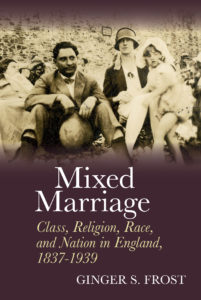
Ginger S. Frost, Mixed Marriage: Class, Religion, Race, and Nation in England, 1837-1939. 2024
This book is a study of the social and legal consequences of mixed marriage in England by class, religion, race, and nationality between 1837 and 1939. Using a wide variety of sources, such as government documents, marital litigation, poor-law records, and autobiographies, it explores the reaction of the family, neighbourhood, and state to those who chose exogamous matches.
The major factor in these marriages was gender. Wives did the emotional work to overcome divisions, and they also had more legal problems than husbands over property, divorce, and custody of children. Wives who would not or could not adjust to differences exposed the gendered power relations normally hidden in the fiction of separate spheres. Such spouses included wives who had more property than their husbands, those who refused to convert to their husbands’ religions, and those who could not adapt to a foreign country
Timing was also crucial. Class and religion were bigger factors in the nineteenth century, while race and nationality were more prominent in the twentieth. During economic downturns or war, mixed families could face hostility, but this was not invariable. In poor neighbourhoods, especially, acceptance was the norm, with blending of religions, races, and nations common. Overall, England had a long history of welcoming immigrants that blunted some of the prejudices also common to this age.
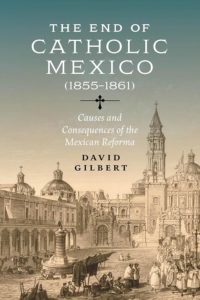
David Gilbert, The End of Catholic Mexico (1855-1861): Causes and Consequences of the Mexican Reforma. 2024
In The End of Catholic Mexico, historian David Gilbert provides a new interpretation of one of the defining events of Mexican history: the Reforma. During this period, Mexico was transformed from a Catholic confessional state into a modern secular nation, sparking a three-year civil war in the process. While past accounts have portrayed the Reforma as a political contest, ending with a liberal triumph over conservative elites, Gilbert argues that it was a much broader culture war centered on religion. This dynamic, he contends, explains why the resulting conflict was more violent and the outcome more extreme than other similar contests during the nineteenth century.
Gilbert’s fresh account of this pivotal moment in Mexican history will be of interest to scholars of postindependence Mexico, Latin American religious history, nineteenth-century church history, and US historians of the antebellum republic.

Matt Hoven, Hockey Priest: Father David Bauer and the Spirit of the Canadian Game. 2024
Catholic University of America Press
Born in Waterloo, Ontario, in 1924, to a prominent family, David Bauer attended St. Michael's College-School run by the Basilian Fathers of Toronto. After serving in World War II, Bauer joined the religious community and coached its St. Michael's Majors to a national championship in 1961. Influenced by philosophers like Jacques Maritain, Bauer tried to find solutions to problems created within elite hockey and thus founded Canada's first ever National Team program. This team countered the cutthroat ideals of hockey's powerbrokers and set out to return Canada to international glory. The team represented the nation at several global tournaments and three Winter Olympic Games. Bauer was posthumously inducted into the Hockey Hall of Fame in 1989.
Hockey Priest looks past simply understanding Bauer as a do-gooder or hockey innovator. It shows how he attempted to create a different stream of hockey that could better support youth and so build up the nation. Archival research for the book uncovered Bauer-written hockey reports, speeches, and notes that detail his thinking about the game and his politicking to bring about change in it. Interviews with dozens of associates and family members told the story of his bold efforts to take on the National Hockey League. Despite his work being undermined by some supporters of the corporate game, Bauer offered a vision for Canada's sport that remains an important counterpoint in the sport's history and its ongoing challenges.
Finally, for staying up-to-date on the latest titles in all fields, we recommend regularly perusing New Books Network and its "New Books in Christian Studies” page. These pages are updated regularly.
